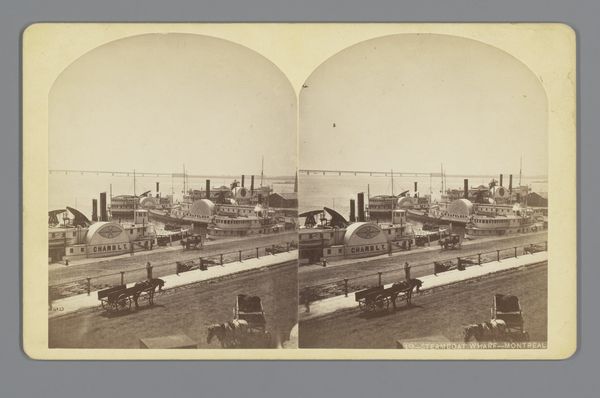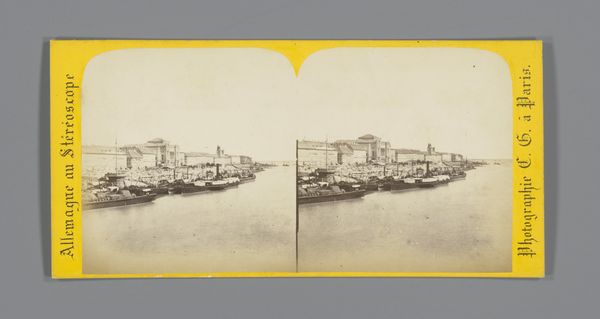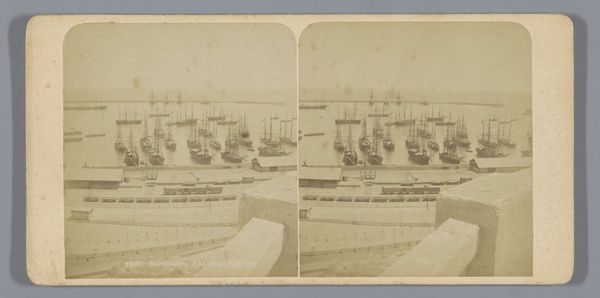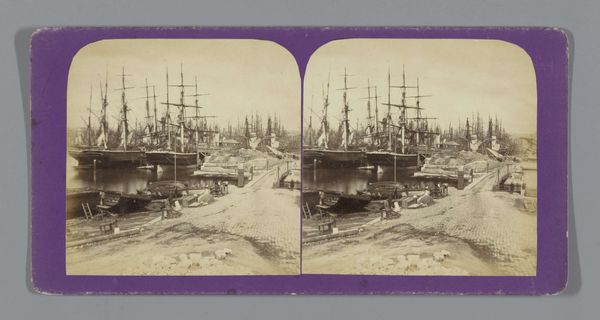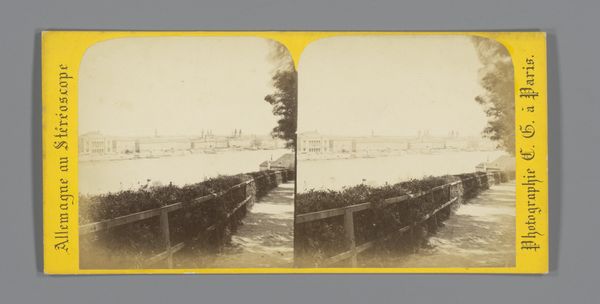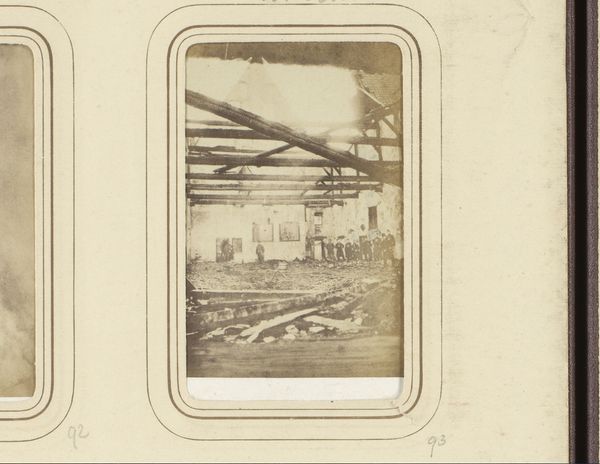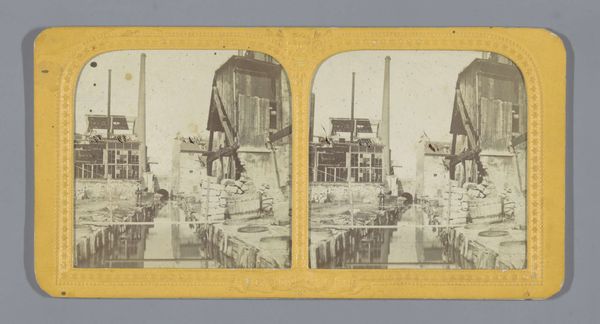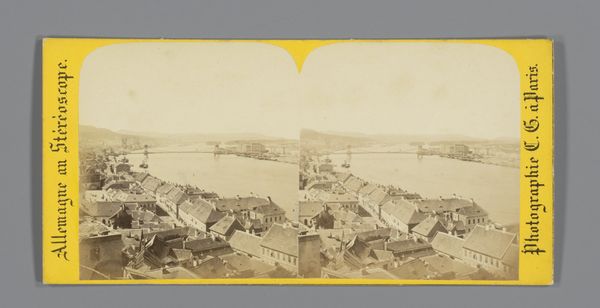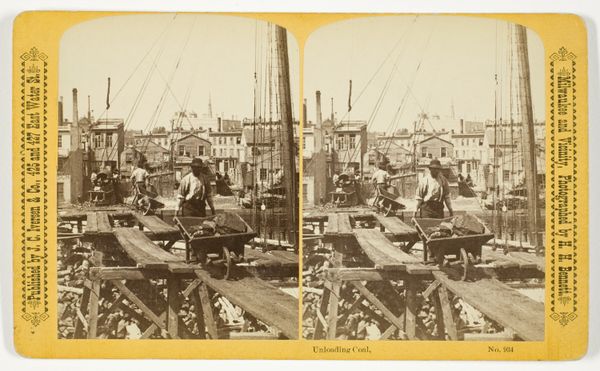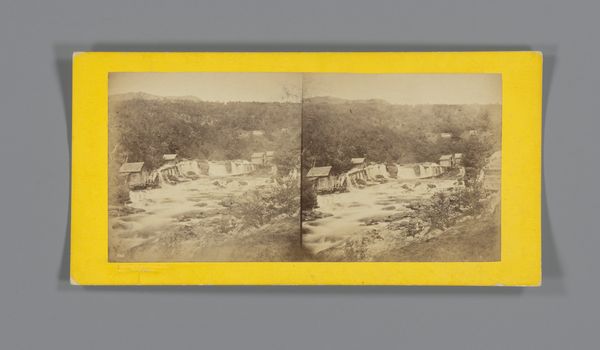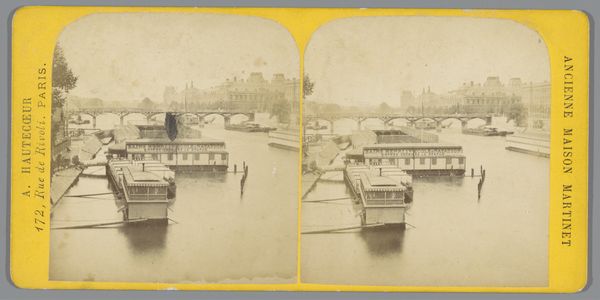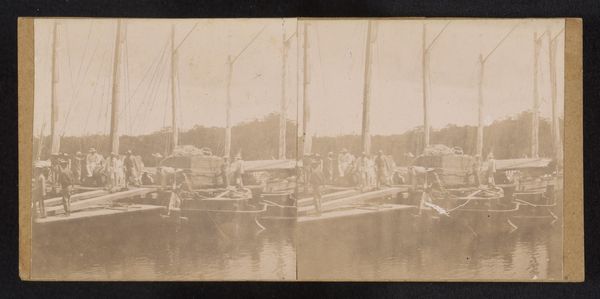
Dimensions: height 85 mm, width 175 mm
Copyright: Rijks Museum: Open Domain
Curator: The stereoscopic gelatin silver print we’re looking at is called “Gezicht op Bryggen in Bergen, Noorwegen,” which translates to "View of Bryggen in Bergen, Norway." It was captured sometime between 1861 and 1870 by Marcus Selmer. Editor: Immediately, I feel transported back in time. The detail is incredible for such an old photograph. It evokes a sense of calm, even though it depicts a bustling harbor. It feels almost dreamlike, like peering into a memory. Curator: Yes, there’s definitely a tranquility to it, despite all the masts and rigging. Selmer really captured the essence of Bryggen. To me, this image embodies a sense of the past layered into the present, you know? Like, you can almost smell the salt and hear the cries of the gulls. But there is this visual emphasis that has some emotional or spiritual element, an almost mystical presence of light as it filters across the still water, too. Editor: That filtering light is key. The way it plays across the wooden buildings and the water, it softens everything and creates this very unique mood. And the water is filled with images of fishing boats, essential vessels and a connection to something bigger – a network to commerce, food, survival. There’s so much symbolism inherent to the sea! Curator: And you can tell it’s an important commercial hub. Those steep roofs probably protect vital stores. These could have even served as the headquarters of the Hanseatic League for centuries – and if that isn’t cultural weight, I don’t know what is. What do you make of the human figures captured in this frozen moment? Editor: They add a dimension of everyday life. Notice their diminutive size and this amplifies the scope of this place. Bryggen’s buildings stand so sturdily on their foundations, while the world transforms and changes all around them, yet there they are, steadfast and a visual reminder of cultural memory, always on the brink of sailing, always on the cusp of a catch. Curator: What is so wonderful is how Selmer used the then new medium to preserve that tangible reality, yet through this choice of image making—almost elevated it with his perspective, through that ethereal touch. He lets you ponder the passage of time in ways paint could not. Editor: Exactly, it gives such clarity in its depiction, which in itself gives clarity of feeling about the landscape and those buildings – and yes, the movement of time! It encourages reflections on our cultural inheritance, its impact on us – on me - it just feels remarkably resonant and makes it really worth your while to stop and really experience that impact.
Comments
No comments
Be the first to comment and join the conversation on the ultimate creative platform.
